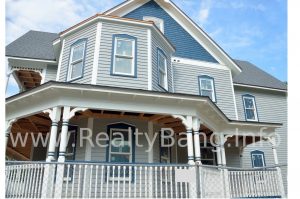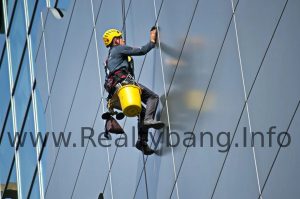Installation of Air Conditioners and Electric Water Heater: In summer, high relative humidity elevated air temperature, and bright sunlight can sometimes combine to produce an uncomfortable indoor environment. An air conditioning system can provide comfort for occupants by reducing the air temperature and humidity levels in the home.
Options open to the consumer include a room air conditioner, a central air conditioner, or a heat pump. The best choice of system will depend on your circumstances; Therefore, it is worth taking the time to evaluate your needs.
Here are some points about Installation of Air Conditioners and Electric Water Heater:
Types of air conditioners
As mentioned earlier, there are two basic types of air conditioners –
- Room air conditioner
- Central air conditioner
Room air conditioner
A room air conditioner is essentially a smaller version of a central air conditioner and is intended to cool only a small area, usually a room. Powered by electricity, it removes heat from the living space and distributes it from the outside to maintain a comfortable position during hot, moist weather.
Room air conditioner Installation
Room air conditioners are available in styles that are designed on the wall or through a window opening. Many more window-mounted models are available, offering you a good choice of features and suppliers.
Some rooms can be heavy and awkward to handle air conditioners. Make sure you use enough assistants to make the installation safe. Once the unit is safe, seal all air leaks to avoid unnecessary air exchange during the operation of the air conditioner. Fill in large gaps using the panel or side screen provided in the installation kit.
Seal any remaining cracks with either a peel or strip of sealant that prevents drafts and can be removed without damaging the paint. An airtight seal will also prevent insects from entering the home through the opening of the air conditioner.
Some room air conditioners, especially those with larger capacities, will require a dedicated electrical circuit or have specific requirements regarding the current rating of the wiring and breaker. Before purchasing, check your electrical system.
Identify what other electrical loads are on the circuit that you plan to use, and with the help of an electrical contractor, check the existing wiring to determine how much additional load can be safely added. If a new circuit is required, it must be installed by a qualified electrical contractor and conform to the electrical code.
Central air conditioner
The central air conditioner is designed to cool the entire house. The large compressor and outdoor coil are located outside and connected to an indoor coil fitted in the furnace by refrigerant lines. The same duct system is used for both heating and cooling the distribution of air.
Central air conditioner Installation
When installing a central air conditioner, the contractor must follow the manufacturer’s instructions carefully.
In new construction, consider installing a central air conditioner outdoor unit at home. This avoids problems due to the disposal of backfill around the foundation, causing the external unit to lose its level.
Central air conditioners will typically require more airflow than the furnace needs for heating. Consider a two-speed fan motor with the correct speed chosen automatically based on what is called cooling or heating.
Keep the refrigerant lines as short as possible, and where the lines pass through the outside wall, make sure that the space between the lines and the wall is filled with a flexible material, such as a plumber’s putty. This will stop noise or vibration problems and air leakage.
The cost of installing a central air conditioner will vary depending on the nature of the existing boiler, whether or not the existing ductwork needs to be modified, and the central to improve electrical service to cope with the increasing load of electricity. Whether or not an air conditioner is required.
How to install an electric water heater
Water pressure in your home is important for all water-using appliances. Low pressure reduces stress on pipeline lines and extends the life of equipment and fixtures.
Check the pressure of your home water pressure gauge on your external spigot. 50- to 60-psi is ideal. If your home water pressure is greater than 80-psi, lower it with a pressure reducing valve when the main water is turned off.
You can consider measuring inline pressure to monitor pressure. If you don’t have pressure-reducing valves in your home, a pro can install one for you. To install a new electric water heater you need to follow these steps:
Install new heaters in place
Place the new water heater in the drain pan. You can avoid potential flooding by routing the pipe from the drain pan to the drain.
Install T&P valve
If your water heater does not come with a new T&P relief valve, now twist in the new valve. It may be in the box or you may have to buy your own. Do not reuse old valves.
Install discharge pipe
Place the discharge pipe from the T&P relief valve towards the floor or drain. If there is no drain under the pipe, then pour a bucket at the bottom to drip water from the discharge pipe. Cut the pipe so that it is no more than 6 inches from the bucket.
Water hook
Use a flexible hose kit for water hookup. Apply plumber’s strip to the fibers of the heat traps. Then attach the hoses.
Install fittings
Local codes and ordinances in your area should detail the specifics of the installation in your area.
Safe fitting
Add plunger tape to the connector body threads. Secure the fitting to the hose and then hold the hose with a pipe. It should be a bit dull.
Safe compression nut
Slide the compression nut and ring on the pipe. Drive the pipe into the fitting and compress the nut.
Install seismic straps
Seismic bandages are required in some areas to prevent earthquake damage. These strips hit the water tank against the wall to keep the unit from top to bottom. If you are not in the earthquake zone, go to the next step.
Seismic straps should be placed approximately 6 inches from the top of the water heater and 18 inches from the bottom. Find the wall studdings closest to the strap length and drill pilot holes. Secure one end of the stick to the stud with the socket and handle.
Fill the tank
Eliminate the aerator from the nearest tap and start the hot side. Slowly roll on the water supply and check the connections around the water heater for leaks. If you are leak-free, fill the tank. If you leak, turn off the water supply and gently tighten the connection.
Flush the tank
When the water runs through the tap, the tank is filled. Let the water run for three minutes for empty air and debris from the tank.
Connect wires
Remove junction box cover. Connect the earth wire to the green ground pin. Use your masking tape connection note as a guide. Fold wires with wire connectors.
Turn on the power
Replace the junction box cover and turn on the power in the circuit. If your new water heater does not have power, close the circuit and check the connection.
Set water temperature
Observe the manufacturer’s guidance to set the temperature to 120 degrees Fahrenheit. Originally, it may take several hours to heat the water.
Check discharge pipe
After a few hours, check the discharge pipe coming out of the T&P relief valve. A dripping pipe normally means the capacity is too high. Keep the pressure below 80-psi.
Check aeration
If a tap stops running after installation, remove the aerator from the faucet in the subject and allow the water to run for a few moments to clean up the free deposit. Wash and place the aerator.
You may know better ideas about PURCHASE OF GRENADIAN REAL ESTATE.




